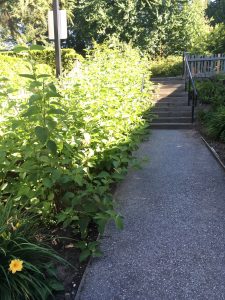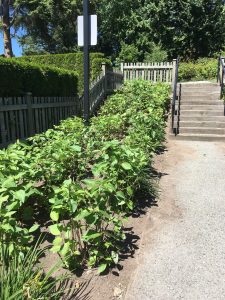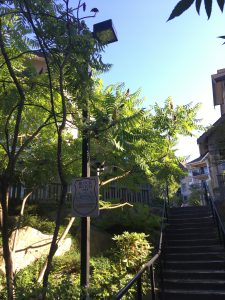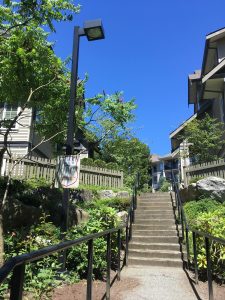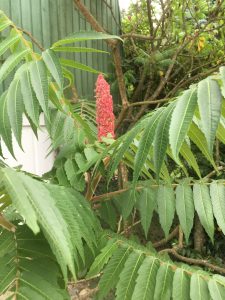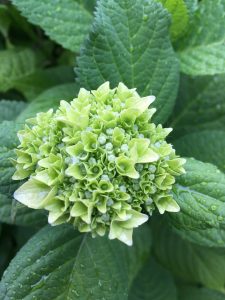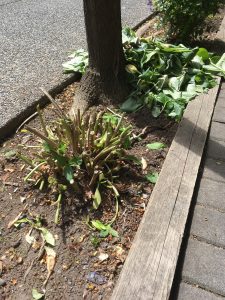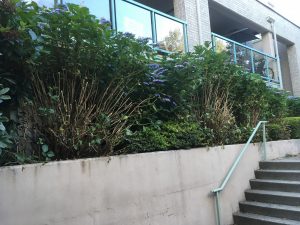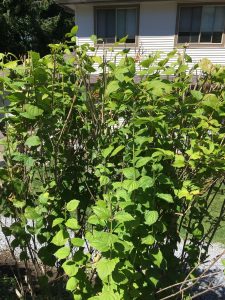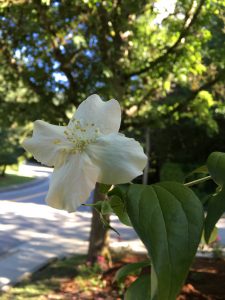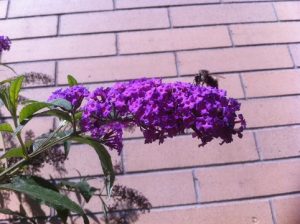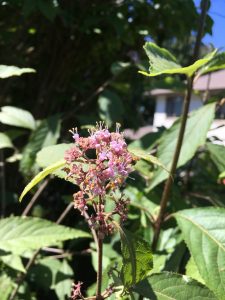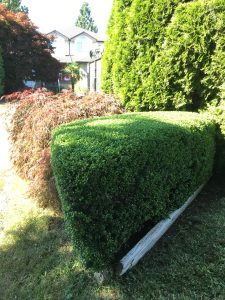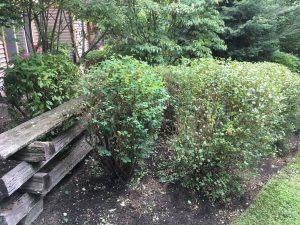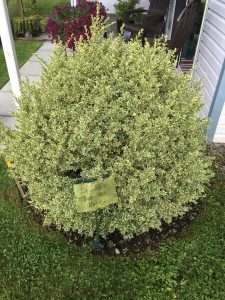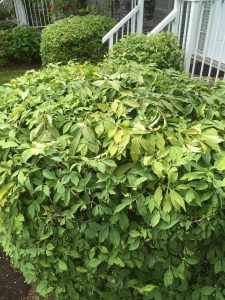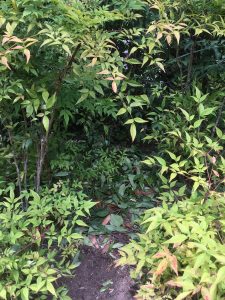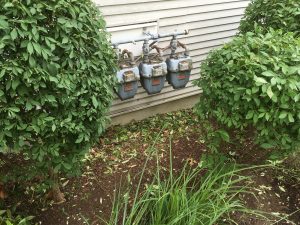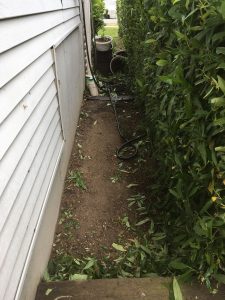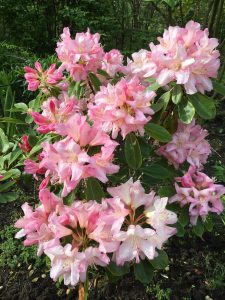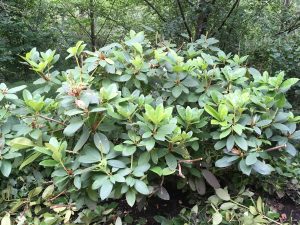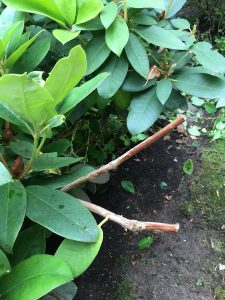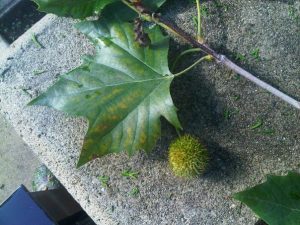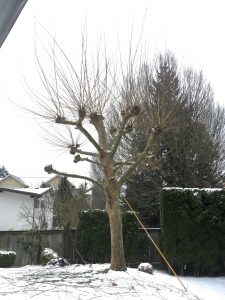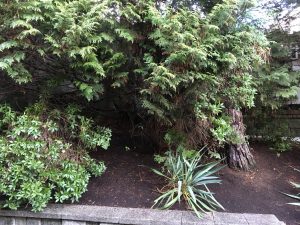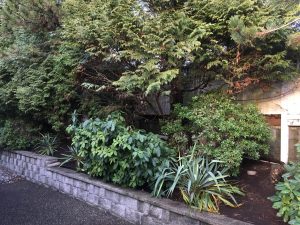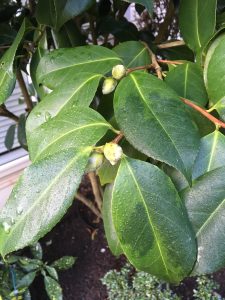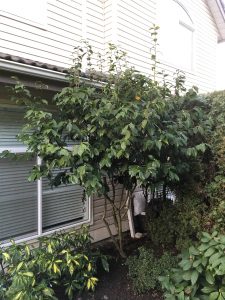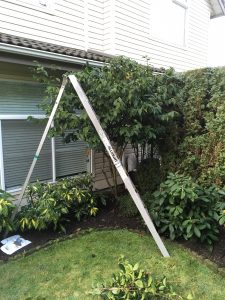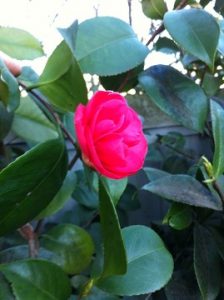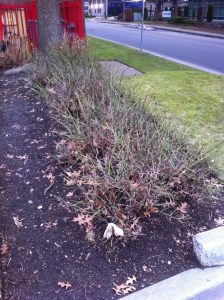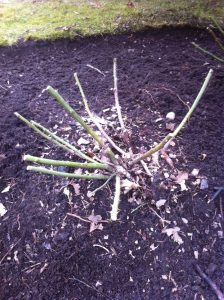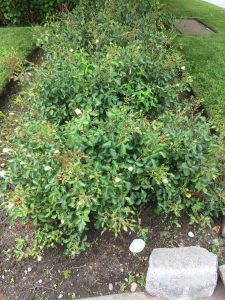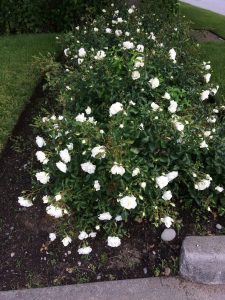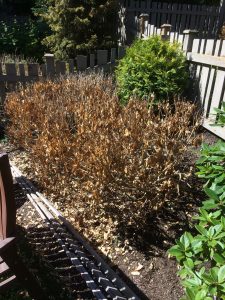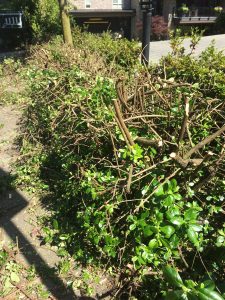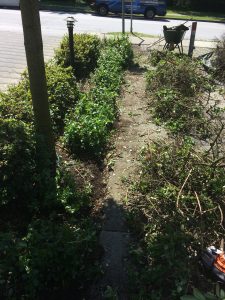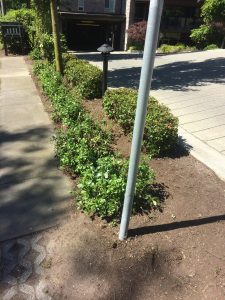It’s always a good idea to ask yourself why you are pruning. In this blog post we’ll examine pruning ordered by Block Watch.
I’m not completely familiar with Block Watch but I know that volunteers keep their eyes open in their neighbourhood for any suspicious activities. And that includes overgrown trees and shrubs where they cause obstruction issues, block lights at night and could potentially provide cover for criminals and perverts.
So that’s how I ended up pruning two frequently used staircase areas.
Dogwoods
This isn’t anything shocking at mid-season. The shrubby dogwood (Cornus) is encroaching into the walkway so I simply power-sheared it back into submission. Now all passersby can get through unmolested by vegetation and any criminals lurking in the shrubbery should be easy to spot. There are also several daylilies (Hemerocallis) that now have some room like the one visible in the bottom left corner.
Since it’s a bad idea to put power-shears in the ground, use hand snips to fix any missed and protruding branches. The same goes for any ugly, shredded stems. Proper raking and weeding should be done before a courtesy blow.
Sumac
Again, this doesn’t look so bad unless you use this staircase at night. The sumac tree (Rhus typhina) blocks light from reaching the stairs.
So I pruned branches away from the light pole and from above the stairs. But there was a lot more to do here.
Sumac likes to send suckers up so I had to hunt them down and remove them because the last thing we need here is more mature sumac trees. I also removed dead branches.
Then I snipped roses and Rhododendrons, plus I pinched off the old spent flowers for a cleaner look. It’s a time consuming activity but it can be done on smaller specimens to achieve a cleaner look. Just make sure you don’t pinch off the new buds.
Weeds and cultivation were the last things on my list before end of the day clean-up blow.
Always ask yourself WHY you are pruning. This blog post shows the importance of clear high-profile staircases and night time light penetration.


